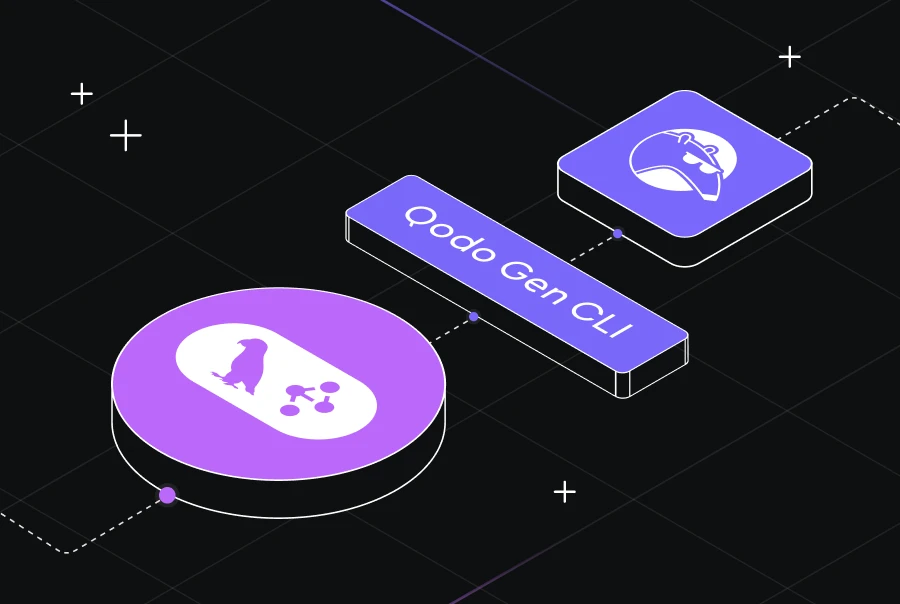Step-by-Step Guide to Building a High-Performing Regression Test Suite


Introducing bugs when developing new code or features is inevitable. In an attempt to innovate and create new solutions or update existing ones, developers often introduce new defects, sometimes worse than the ones they initially attempted to tackle. That’s where regression testing comes into play.
What is regression testing?
With regression testing in place, developers ensure that newly developed code doesn’t affect the overall system’s functionality and performance. This software development technique involves applying testing mechanisms after any code change or update. For example, it often includes re-executing previously run tests to verify that modifications haven’t introduced unintended side effects or broken existing features.
Regression test suites are collections of tests orchestrated to achieve our testing goals and strategy. An effective regression test suite is essential for maintaining software quality, stability, and reliability. It helps detect issues early, prevents errors from escalating to critical incidents in production systems, and allows developers to continuously improve the products without compromising the user experience.
How do you build a high-performing regression test suite?
This step-by-step guide will walk you through building a high-performing regression test suite.
1. Define the scope and objectives
The first step in building a high-performing regression test suite is clearly defining its scope and objectives. This process begins with identifying your software’s critical functionalities and features.
Focus on core components directly impacting user experience, business operations, or system stability. These may include key user workflows, data processing modules, or integration points with other systems.
Next, align your testing efforts with broader business goals and user needs. Consider factors such as:
- Business priorities and strategic objectives
- User expectations and common use cases
- Regulatory compliance requirements
- Performance goals
By aligning your regression testing with these aspects, you ensure that your efforts contribute directly to the product’s overall success.
Finally, establish measurable objectives for your test suite. These objectives should be specific and quantifiable so that you can monitor and report progress on them. Examples include:
- Achieving a certain percentage of test coverage for critical features
- Reducing the number of post-release defects by a certain percentage
- Decreasing the time required for regression testing by a set amount
- Improving the detection rate of regression issues before they reach production
2. Analyze requirements and risks
The second step in building a high-performing regression test suite involves understanding requirements and conducting a thorough risk assessment. Begin by understanding and documenting the system’s intended functionality and behavior. This review should include functional and non-functional requirements and any recent changes or updates to the software.
Next, run a detailed risk assessment to identify potential vulnerabilities within the system. This process involves evaluating factors such as the complexity of code changes, the criticality of affected components, and historical data on defect-prone areas. Use techniques like risk matrices or models to measure the likelihood and potential impact of each identified risk.
Finally, prioritize areas for testing based on their impact and likelihood of failure. Focus on the most high-risk areas affecting the system’s stability, performance, or user experience. This risk-based approach allows you to allocate testing resources more effectively, ensuring critical functionalities receive the most attention.
3. Understand different types of regression tests
Building an effective test suite requires understanding and selecting the necessary regression test types to achieve your strategy. Different types of regression testing are available, including selective, progressive, complete, corrective, and unit testing. Let’s explore the different types below:
Selective or partial regression testing focuses on retesting specific areas of the software affected by recent changes. It uses a subset of existing test cases to analyze the impact of new code on the software’s existing functionality, balancing thoroughness with efficiency. This approach is instrumental in agile environments where frequent changes occur.
Progressive regression testing is used when software specifications change, requiring the creation of new test cases. It ensures that new versions don’t break existing features while addressing evolving requirements.
Corrective regression testing is performed after defects have been identified and fixed. Its purpose is to verify that bug fixes do not introduce new issues or unintended system functionality changes.
Complete regression testing involves a comprehensive examination of the entire system. It’s typically conducted before major releases or after significant architectural changes to ensure all aspects of the application function correctly.
Unit regression testing concentrates on individual units or software components. It’s often automated and integrated into the development process to catch regressions at the code level early in the development cycle.
4. Define and prioritize test cases
Develop modular and reusable test cases across different scenarios. This approach enhances the efficiency and maintainability of your test suite. Structure your test cases with clear inputs, expected outputs, and precise steps, and use parameterization to adapt them to various data sets and conditions.
Aim for broad test case coverage across different scenarios, such as positive and negative test cases, edge and corner cases, user roles and permissions, data input, and cross-device testing.
Another critical aspect of prioritization is identifying and focusing on high-risk areas of the application. Similarly, prioritize high-impact and frequently used features and parts of an application. These include core functionalities directly impacting business operations and areas with high visibility or financial implications.
5. Automate where possible
As with every effective modern testing strategy, automation should be a core requirement of your regression testing suite. By identifying suitable candidates for automation, selecting appropriate tools, and developing maintainable scripts, you can significantly enhance the efficiency and effectiveness of your testing process.
Focus first on automating the most repetitive, frequently run tests, or those that are time-consuming and error-prone. Depending on your project characteristics, choose a testing automation framework that satisfies your needs: popular testing automation tools and frameworks to consider include Selenium, Cypress, Playwright, and Appium.
Finally, implement a robust maintenance strategy to keep your automated tests up-to-date and reliable. This includes regularly reviewing and updating test scripts, removing obsolete tests, and optimizing the test suite based on execution metrics.
A central part of your testing automation will be integrating with your existing continuous integration and continuous delivery (CI/CD) pipelines. Tests should be triggered automatically on code commits, pull requests, and code reviews. An effective strategy is configuring isolated, short-lived, and reproducible environments for testing.
6. Establish test monitoring
To develop an effective regression test suite, you have to lean on test monitoring. By implementing robust monitoring practices, teams can quickly identify test issues, track their progress, and make data-driven decisions to optimize them.
To achieve this, integrate your existing monitoring tools with your CI/CD pipeline and configure alerts for critical test failures or performance regressions. Logging mechanisms should also be implemented to capture detailed information about test runs, including execution time, resource usage, and error messages.
Leveraging this information, you can compile dashboards with test results, including key metrics such as pass/fail ratio, test execution times, code coverage, and test failures.
7. Maintain and update the test suite
As you can imagine, building a high-performing regression test suite isn’t a “set and forget” task. It requires ongoing effort, regular reviews, and optimizations based on new requirements and observed execution metrics.
Schedule periodic reviews of the test suite, ideally after each major release or significant change. When reviewing, involve both developers and testers to gain diverse perspectives. Build a reflex to identify and remove tests that are no longer relevant and add new test cases to cover recently added features and newly discovered edge cases.
Your test suite’s performance may deteriorate at times for various reasons. In such cases, try to identify slow-running tests and spend time optimizing them. Investigate tests that fail frequently to determine if they indicate genuine issues. Monitor the impact of changes and adjust as necessary. A proactive approach helps prevent test suite degradation and keeps your testing efforts aligned with the evolving needs of your software and organization.
Common challenges when building a regression test suite
If tests are not well defined, they might be inconsistent, sometimes passing and sometimes failing without any changes to the code or test environment. Flaky tests pose a significant challenge in regression testing as they can lead to false positives or negatives, eroding confidence in the test suite. To address flaky tests, ensure each test is independent and doesn’t rely on external factors or other tests. Use mocks, stubs, or fakes to simulate dependencies.
As software evolves, regression test suites tend to grow, leading to longer execution times and increased maintenance overhead. To manage test suite growth effectively, focus on high-impact areas and critical functionalities and regularly review and refine the test suite.
Another aspect of an effective regression testing suite is proper maintenance and handling of complex test environments. Complex test environments operating across various systems and devices can lead to inconsistent results and difficulty in maintaining test reliability. Aim to standardize test environments as much as possible. Leverage tools like Docker to create isolated and reproducible environments and ensure test data is well-maintained and up-to-date across different environments.
Key Points
In this blog, we defined regression testing and provided a step-by-step guide to building a high-performing regression test suite with key considerations, such as clearly defining the scope and objectives and automating where possible.
Regression testing will likely see several advancements over the years as AI-driven optimization will help prioritize tests, predict regressions, and optimize test execution. Remember, the key to success lies in building the test suite and continuously refining and adapting it to meet the evolving needs of your software and organization.


